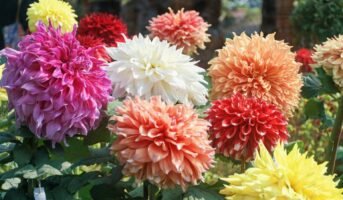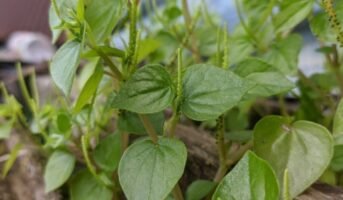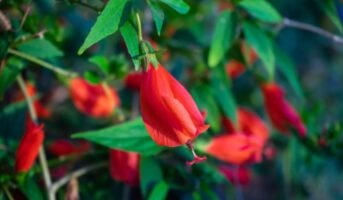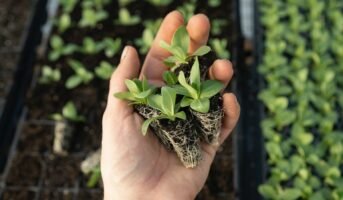There is only one species of Muntingia in the family Muntingiaceae, and it was named in honour of Abraham Munting. Originally from the neotropics, north to Bolivia, and widely spread elsewhere, it produces edible fruit.
What is Muntingia calabura?
Muntingia calabura is a small, dark-green tree that grows in the forests of Mindanao. The tree’s leaves grow in sprays, and its branches are thin and flexible. Its flowers are small, white and borne in clusters at the tips of the branches.
What is the common name of Muntingia calabura?
The common names of Muntingia calabura are Singapore Cherry, Cherry Tree, Japanese Cherry, Buah Cheri, Malayan Cherry, Panama Berry, Jamaican Cherry, Kerukup-Siam and Buah Ceri.
Muntingia calabura: Quick facts
| Plant Name | Muntingia calabura |
|---|---|
| Common Name | Jamaica Cherry |
| Genus | Muntingia |
| Family | Muntingiaceae |
| Mature Size | 25-40′ tall |
| Cultivation | Southern Mexico, Central America, tropical South America, Peru, Bolivia, the Greater Antilles, St. Vincent, and Trinidad and Tobago, as well as the Greater Antillean Islands. |
| Benefits | Antiseptic properties and therapeutic uses of the flowers include the treatment of abdominal cramps and spasms. Colds and headaches can also be relieved with it. |
See also: All about cherry tree
Muntingia calabura physical description

Source: Pinterest
- Muntingia calabura is a small, light-coloured tree that can grow up to 25 feet tall.
- It has green leaves that are shaped like triangular points, and its flowers have white petals with pink stripes.
- The fruit is small and round, but it changes colour as it ripens, turning yellowish brown when ripe.
- Muntingia calabura is native to the Americas and has been grown in gardens since ancient times as an ornamental tree.
Growing tips for Muntingia calabura
Muntingia calabura is a tropical plant that requires full sun and high humidity. It grows best in coastal areas, where it can be found growing in the wild.
To grow Muntingia calabura, you’ll need to provide it with plenty of sunlight and water. You should also keep in mind that this plant needs very specific conditions to flourish. If you aren’t familiar with these conditions, or if your area is too hot or too dry for it, then you may not be able to grow Muntingia calabura successfully.
Muntingia calabura needs a good soil mix, and it needs regular watering, especially during the first year of growth. After the first year, you can start watering once a week if needed. The plant does best in warm temperatures between 16-27 degrees Celsius. It will tolerate temperatures up to 38 degrees Celsius but should be watered more frequently at higher temperatures.
Maintenance tips for Muntingia calabura
Here are some tips for keeping your Muntingia Calabura plant thriving:
Maintain proper soil moisture
The soil in which the tree is growing should be kept moist, but not overly wet. Your soil is too damp if you can see water dripping from the pot when it rains.
Check your watering schedule often
Check your plants every three days or so to make sure they are getting enough water. If they don’t need more water than normal, then leave it alone. They can always use more later on if needed.
Provide adequate light for adult plants and seedlings
Planting your tree in full sun will make it grow faster and healthier. However, if you live in a hot climate or have other reasons for wanting to keep the plant shaded from direct sunlight (like privacy), you can grow either an adult tree or seedlings under shade during the summer months to keep them from growing too large before winter comes around again.
What are the benefits of Muntingia Calabura?
- Muntingia calabura has a long history of use in traditional medicine and is thought to have medicinal properties similar to ginseng.
- Muntingia calabura is used as an anti-inflammatory and wound-healing agent by many cultures throughout Asia.
- In Malaysia, it is traditionally used for treating wounds and ulcers, colds, coughs, diarrhoea, acne and other skin problems.
- Since Muntingia calabura is non-toxic, it can be used to make a variety of products, including wine, oil, vinegar and soap. The oil from the tree can also be used for cooking and treating skin conditions like acne or psoriasis.
Advantages of Muntingia Calabura
The flowers of Muntingia Calabura are antiseptic in nature and are used to treat abdominal cramps and spasms.
FAQs
What is the common name of Muntingia calabura?
The plant is commonly known as Jamaica Cherry.
Can Muntingia calabura be eaten?
Fruits of Muntingia calabura can be eaten raw or made into jam.
How does kerson fruit benefit you?
Muntingia calabura, or Kerson fruit, has many health benefits, such as lowering blood pressure and blood sugar, preventing cancer, and relieving pain.
What is the growth rate of Jamaican cherries?
In two years, the plant can grow to a height of 13 feet.
| Got any questions or point of view on our article? We would love to hear from you.Write to our Editor-in-Chief Jhumur Ghosh at [email protected] |
Housing News Desk is the news desk of leading online real estate portal, Housing.com. Housing News Desk focuses on a variety of topics such as real estate laws, taxes, current news, property trends, home loans, rentals, décor, green homes, home improvement, etc. The main objective of the news desk, is to cover the real estate sector from the perspective of providing information that is useful to the end-user.
Facebook: https://www.facebook.com/housing.com/
Twitter: https://twitter.com/Housing
Email: [email protected]











